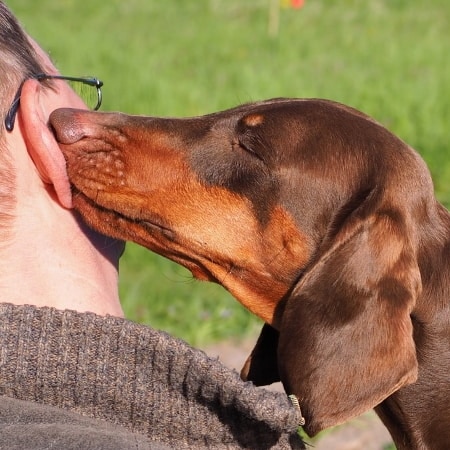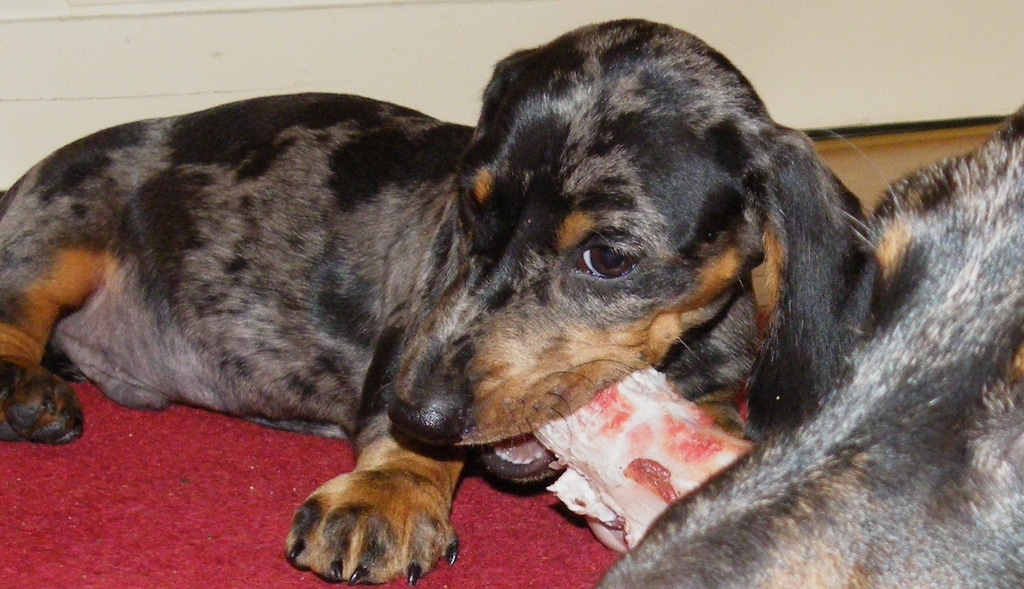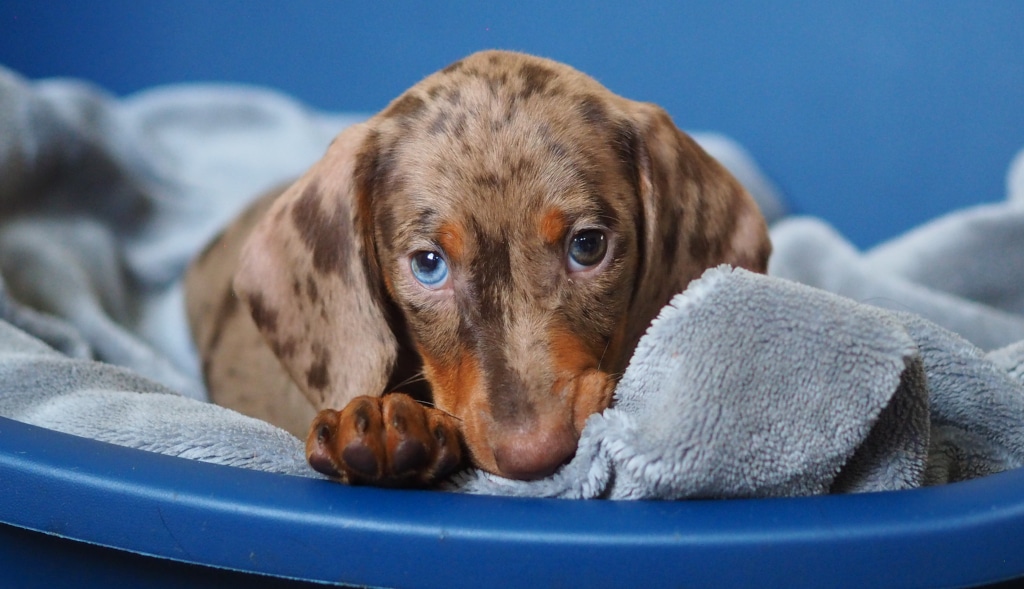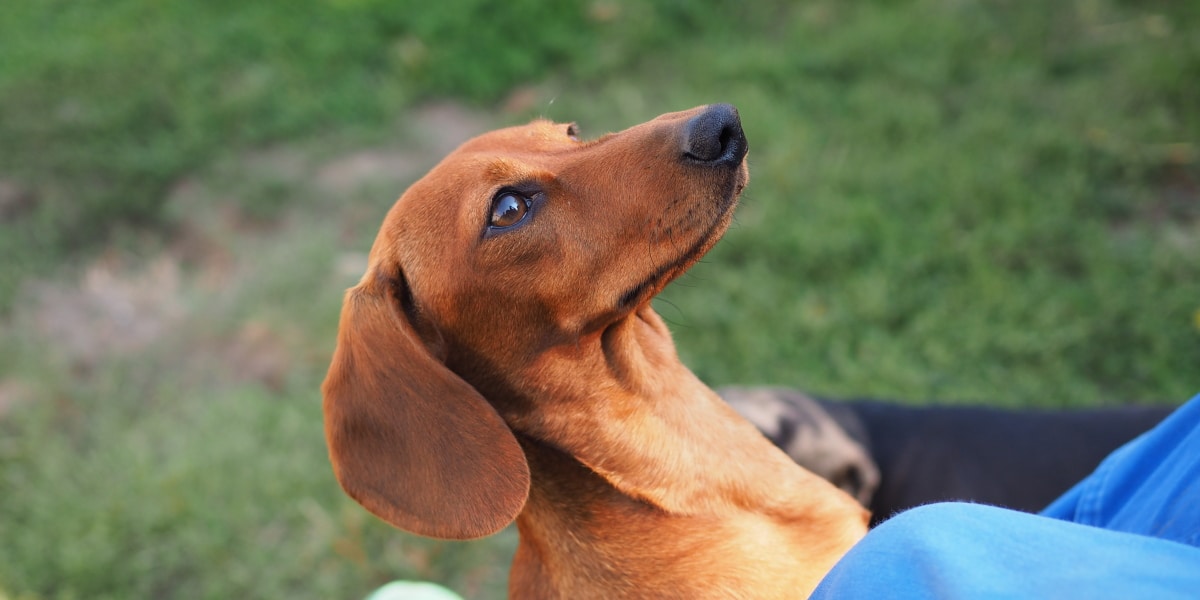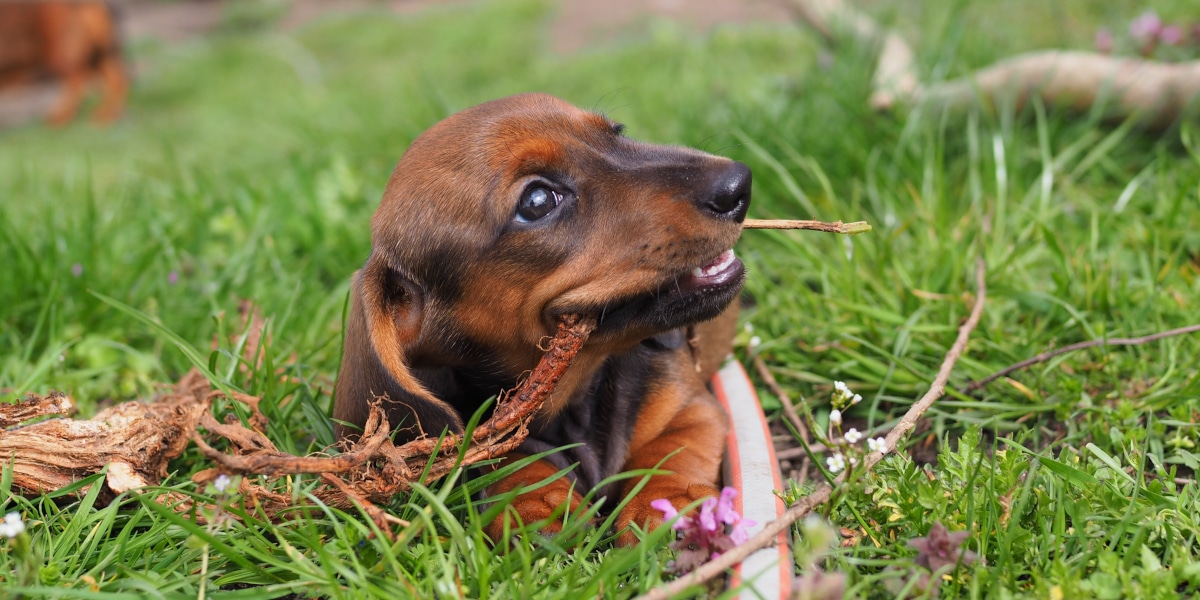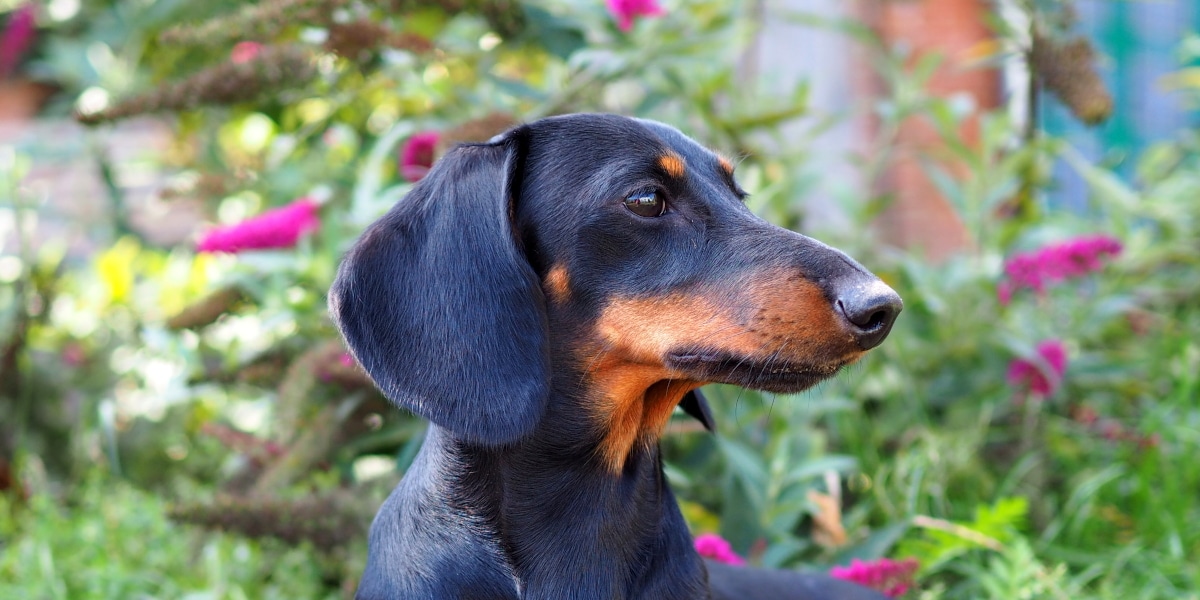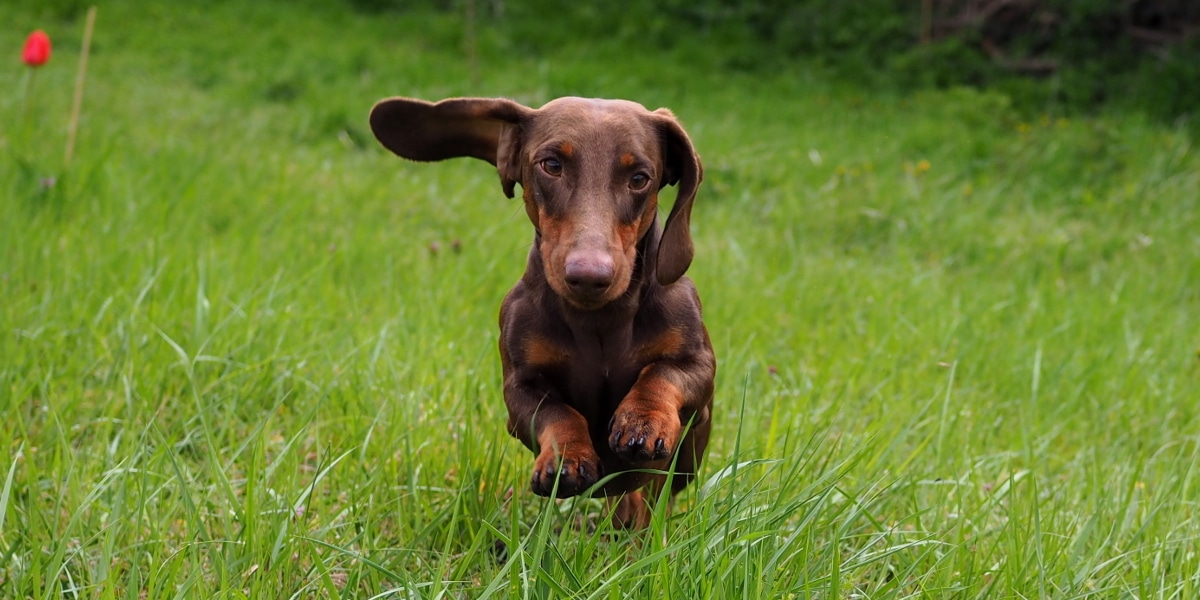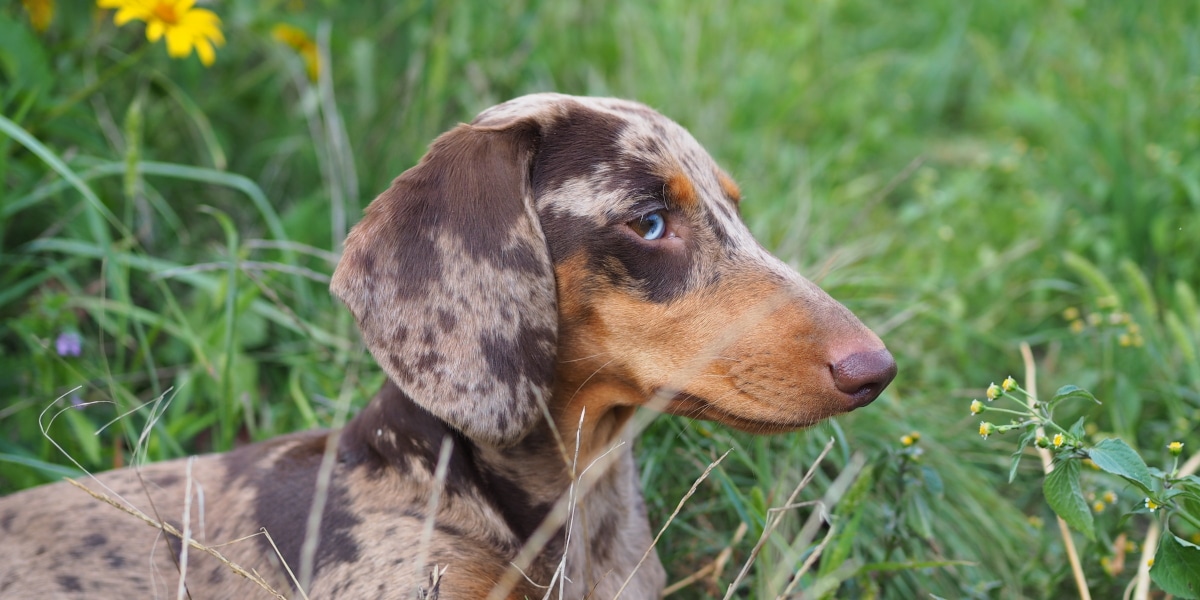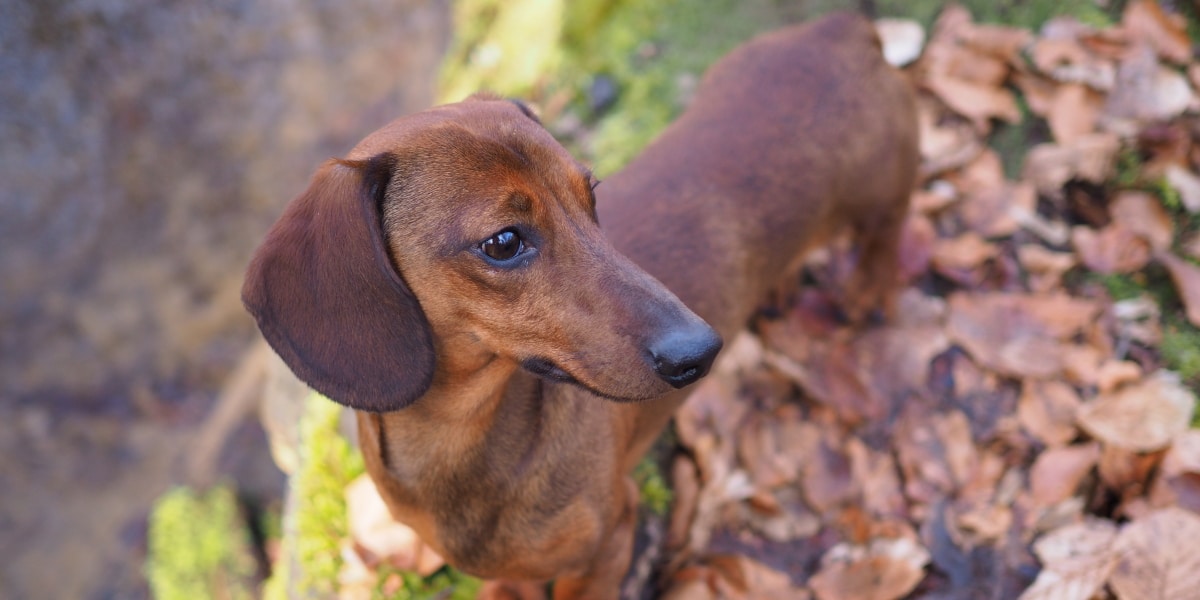Should a dachshund jump and climb stairs?
A dog in good physical condition and with good musculature is able to perform normal everyday activities. There are many opinions about stair climbing of dogs, especially dachshunds, but little established knowledge. | read more
How long can a dachshund be left alone?
In general, we recommend that a Dachshund should be left alone for a maximum of 4 hours. This applies to an adult dog. Of course, he must have access to fresh drinking water at all times during the time he is left alone. | read more
Collar or harness?
For a (dachshund) puppy and a not fully grown young dog always a collar! Whether you prefer your Dachshund to walk on a collar or in a harness later on, make sure he gets enough exercise to build up good muscles. In any case, you should teach your dog not to pull on the leash while walking. A harness is not a substitute for leash walking training! | read more
Are dachshunds a healthy breed?
Dachshunds are long-lived. Longevity in old age also means “age-related degeneration”. Who, to his disappointment, has not already heard this from his family doctor? Apart from that, Dachshunds, like other “working dogs”, belong to the rather robust breeds. A dog that could not do its work because of “bred-in” health impairments, which in the case of the Dachshund is the versatile use in hunting, would be a contradiction in terms. | read more
What can I do to reduce the risk of a slipped disc in my dachshund?
Prevention is better than cure. Therefore, the lifestyle choices you can make are very important in reducing your dog’s risk of a back problem. | read more
When should my dachshund be neutered?
Not at all.
Neutering almost certainly promotes the occurrence of haemangiosarcomas, the notorious spleen tumours. With regard to cruciate ligament ruptures, it also seems to be clear that these injuries occur much more frequently in neutered animals. The connection between neutering and a common disorder in older dogs, hypothyroidism, is now also fairly clear. | read more
Should I take out insurance for my dachshund?
Dog owner liability is a must! The DTK 1888 e.V. has concluded a framework agreement with Zander-Versicherungsmakler GmbH & Co. KG for a dog owner liability insurance. The sum insured is € 10 million lump sum for personal injury, property damage and financial loss. Damage to rented property is also insured without a deductible.
In some federal states, dog owners are obliged to take out such insurance. From the age of 3-6 months, a dog must be insured in the federal states of Berlin, Hamburg, Lower Saxony, Saxony-Anhalt, Schleswig-Holstein and Thuringia. In the other federal states, there are special regulations, e.g. for dogs over a certain size. Only in Mecklenburg-Western Pomerania there is no compulsory insurance at all. | read more
Does my female dachshund need to be mated?
Clear answer: No. There is a persistent legend that a bitch should have gone through pregnancy, birth and puppyhood at least once in her life in order to have a “normal” development and to avoid behavioural problems, but this is… just a legend. This legend has no basis in fact. In particular, it does not prevent later false pregnancies. | read more
What to do in case of phantom pregnancy?
Bitches often show signs of pregnancy, even if no mating has taken place in heat. The mammary gland may swell, the teats become more prominent, even milk discharge may be provoked. In addition, there are sometimes behaviours typical of a mother, such as nest-building behaviour or even the throwing of an object, often the favourite toy. | read more
What is a slipped disc?
The intervertebral discs lie between the bony vertebral bodies and form the spinal column with them. The spinal canal runs through the spinal column and contains the spinal cord and thus the central nerve cord. | read more
